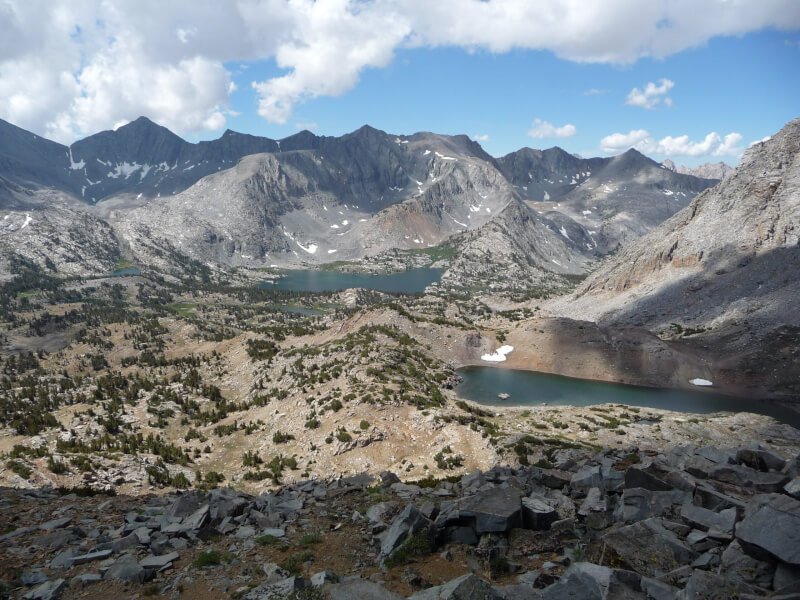In “Basic & Primitive Navigation: A Waterproof Folding Guide To Wilderness Skills & Techniques,” embark on a journey into the heart of the wilderness and discover the secrets of basic and primitive navigation. This unique guide equips you with the essential skills and techniques needed to explore the great outdoors with confidence. With its waterproof folding design, it’s the perfect companion for any adventure, providing you with invaluable knowledge to navigate and survive in the wild. Whether you’re a seasoned trekker or a curious beginner, let this guide be your map to mastering the art of wilderness navigation.

Understanding Navigation
Importance of navigation skills in the wilderness
When venturing into the wilderness, having solid navigation skills is of utmost importance. Knowing how to effectively navigate through unfamiliar terrain can ensure your safety and help you reach your destination without getting lost. Navigation skills can help you find your way back to camp, locate water sources, avoid hazardous areas, and ultimately enjoy a successful outdoor experience.
Basic principles of navigation
Navigation is all about determining your position and finding your way from point A to point B. The basic principles of navigation involve understanding cardinal directions, interpreting maps, using compasses, and utilizing various natural indicators. By having a good understanding of these principles, you can confidently navigate through any wilderness setting.
Different types of navigation methods
There are several different navigation methods that can be employed depending on the circumstances and available resources. Some common methods include map reading, compass navigation, using celestial bodies, dead reckoning, natural navigation, primitive techniques, navigating in challenging conditions, and emergency navigation. Each method has its own unique advantages and can be used alone or in combination with others to ensure accurate navigation in the wilderness.
Map Reading
Types of maps used in navigation
Maps are an essential tool for navigation in the wilderness. There are various types of maps used, including topographic maps, trail maps, and aerial maps. Topographic maps are the most detailed and provide information about elevation, contour lines, water sources, and landmarks. Trail maps are more specific and focus on designated trails and paths. Aerial maps, such as satellite imagery, can also be useful for providing an overview of the terrain and identifying major features.
Symbols and legends on maps
To effectively read and interpret maps, it is important to understand the symbols and legends that are used. Symbols represent various elements found in the wilderness, such as roads, trails, water sources, and campsites. Legends provide explanations for these symbols, ensuring that you can accurately understand and navigate according to the information provided on the map. Familiarizing yourself with common symbols and legends will greatly enhance your map reading skills.
Understanding contour lines
Contour lines are an important feature on topographic maps as they depict changes in elevation. By understanding contour lines, you can determine the steepness of a slope, identify ridges and valleys, and estimate the overall terrain difficulty. Contour lines that are close together indicate steep slopes, while lines that are farther apart indicate gentler terrain. By studying these lines, you can plan your route to avoid challenging or dangerous areas.
Orienting a map with a compass
To effectively use a map with a compass, it is crucial to orient the map correctly. Orienting the map means aligning it with the actual landscape, ensuring that the top of the map corresponds to the north. By using a compass to orient the map, you can accurately determine your current location and navigate according to the map’s directions. This skill is essential for plotting your course and ensuring that you stay on track during your wilderness adventures.

Compass Navigation
Parts of a compass
A compass is a vital tool for navigation in the wilderness. To effectively use a compass, it is important to understand its different parts. The main components of a compass include the baseplate, which provides a stable platform for the compass, the needle, which points towards the magnetic north, and the housing, which contains the compass card and dial. Familiarizing yourself with these parts will enable you to use a compass confidently and accurately.
Understanding magnetic declination
Magnetic declination is the angle between true north and magnetic north. It can vary depending on your location and the year. To navigate accurately with a compass, it is important to compensate for magnetic declination. By adjusting the compass needle to account for the declination value indicated on your map or in a separate source, you can ensure that your bearings are accurate and aligned with true north.
Using a compass to take bearings
Taking bearings with a compass is a fundamental skill in navigation. Bearings are used to determine the direction from your current location to a specific point of interest. To take a bearing, you align the compass needle with the desired target, read the degree markings on the compass dial, and record the value. This value can then be used to navigate towards the desired destination by following the corresponding bearing.
Navigating with a compass
Once you have mastered the use of a compass, you can navigate confidently through the wilderness. By combining your compass skills with map reading and understanding cardinal directions, you can plot your course, determine your location, and navigate accurately towards your intended destination. This ability to navigate with a compass provides you with a reliable and independent method of finding your way in any wilderness setting.



